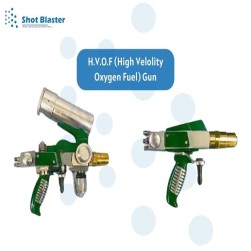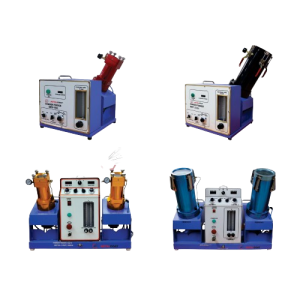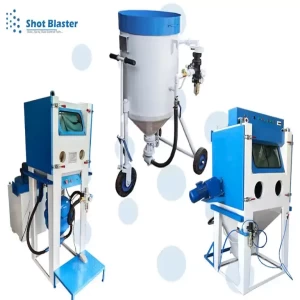Search
All Categories & Products

HVOF Gun
HVOF Gun is also known as High Velocity Oxygen Fuel spray gun. HVOF Spray Gun is a thermal spray coating process that utilizes a combination of fuel gas & oxygen to assemble a high-velocity flame. This flame is then utilized to warm & accelerate a streamlet of powdered material onto surface of substrate, where it liquefies & creates a coating.

HVOF Gun is also known as High Velocity Oxygen Fuel spray gun. HVOF thermal spraying is an approach in which powder material is melted & moved at high velocity towards a marked surface, utilizing oxygen & fuel gas mixtures. A number of combustible molecules, including propylene, propane, hydrogen, acetylene, methane, ethylene, crylene, kerosene, MAPP (methyleacetylene-propadiene stabilized gas), LPG, etc. are utilized as explosion fuels. An HVOF gun system consists of a spray gun, a powder spread unit, a flow meter unit, & an air also gas supply unit. A carrier gas feeds the desired powder from the powder feed system to the gun, where discharge occurs. In the combustion region, the powder material enters the flame, where it evolves molten or semi-molten, leaning on its melting temperature, its feed speed, & the temperature of the flame. The HVOF coating process can generate flame sprays from intermediate to heightened temperatures up to 3000oC, but with quite heightened accelerations up to 2000 m/s, corresponding to almost 100 m/s for conventional flame spray gun & 1000 m/s for plasma spraying. As a result, a stream of spray bits with speeds of 300–800 m/s & usual temperatures in coverage of 1700 C–2200 C is assembled throughout the spraying process. The molten or semi-molten bits are then moved out of gun nozzle at supersonic accelerations towards the target/substrate, where powder material gets deposited.
HVOF Spray Coating Process
Due to the heightened impact velocity of the spread powder bits, coatings built by the HVOF spray coating process are less absorbent and contain loftier bond strength & cohesive strength than those produced by further processes such as plasma spraying, flame spraying, and electric arc spraying. Coating porosity, bond strength and oxide content are typical properties influenced by the coating procedure. Summarizes the familiar features of NiCrBSi coatings sprayed by different spraying techniques, indicating that the HVOF process has advantages in porosity, oxidation degree, hardness, adhesion, and young modulus compared to flame or plasma spraying. In the production of hard metal coatings, the HVOF process allows the deposit of bits slightly underneath melting temperature, thus reducing the oxidation & corrosion of materials such as WC & resulting in superior wear resistance. moreover, HVOF thermal spray coating construction by the impact of heightened velocity, solid particles on the substrate also results in compressive residual stresses which increases the lifetime of coated components under dynamic load. To summarize, the key advantages of HVOF sprayed coatings are:
Advantages of HVOF Spray Coating
- high viscosity.
- concentrated bonding to substrates.
- heightened cohesive strength.
- strongly delimited reactions & phase modifications, e.g. the oxidation or annulment of WC in cobalt matrix materials.
- heightened compressive residual stresses possible.
Applications of HVOF Gun Coating
HVOF coatings contain a broad scope of benefits in varied industries, together with aerospace, automotive, oil & gas, also considerably others. Certain of typical applications of HVOF coatings are:
- Wear resistance: HVOF gun coatings give amazing wear resistance possessions, assembling them perfect for uses with a certain interest heightened tension & abrasive circumstances.
- Corrosion resistance: HVOF coatings deliver exceptional rust resistance effects, assembling them excellent for applications a certain affect vulnerability to extreme atmospheres, like saltwater.
- Thermal barrier coatings: High Velocity Oxygen Fuel spray coating is utilized as thermal border coatings in heightened temperature surroundings, whither they enable to shielding of Surface through thermal impairment.
- Electrical conductivity: HVOF coatings process has been utilized to produce electrical conductance to nonconductor substrates, like plastics like ceramics.
We are the top Manufacturer and Supplier of thermal spray gun, plasma HVOF gun, HVOF d-gun, zinc spay gun, arc spary gun, thermal spray powder, thermal spray booth, abrasive blasting machine, sand blasting room, abrasive blasting machine spare parts, abrasive media, etc.

